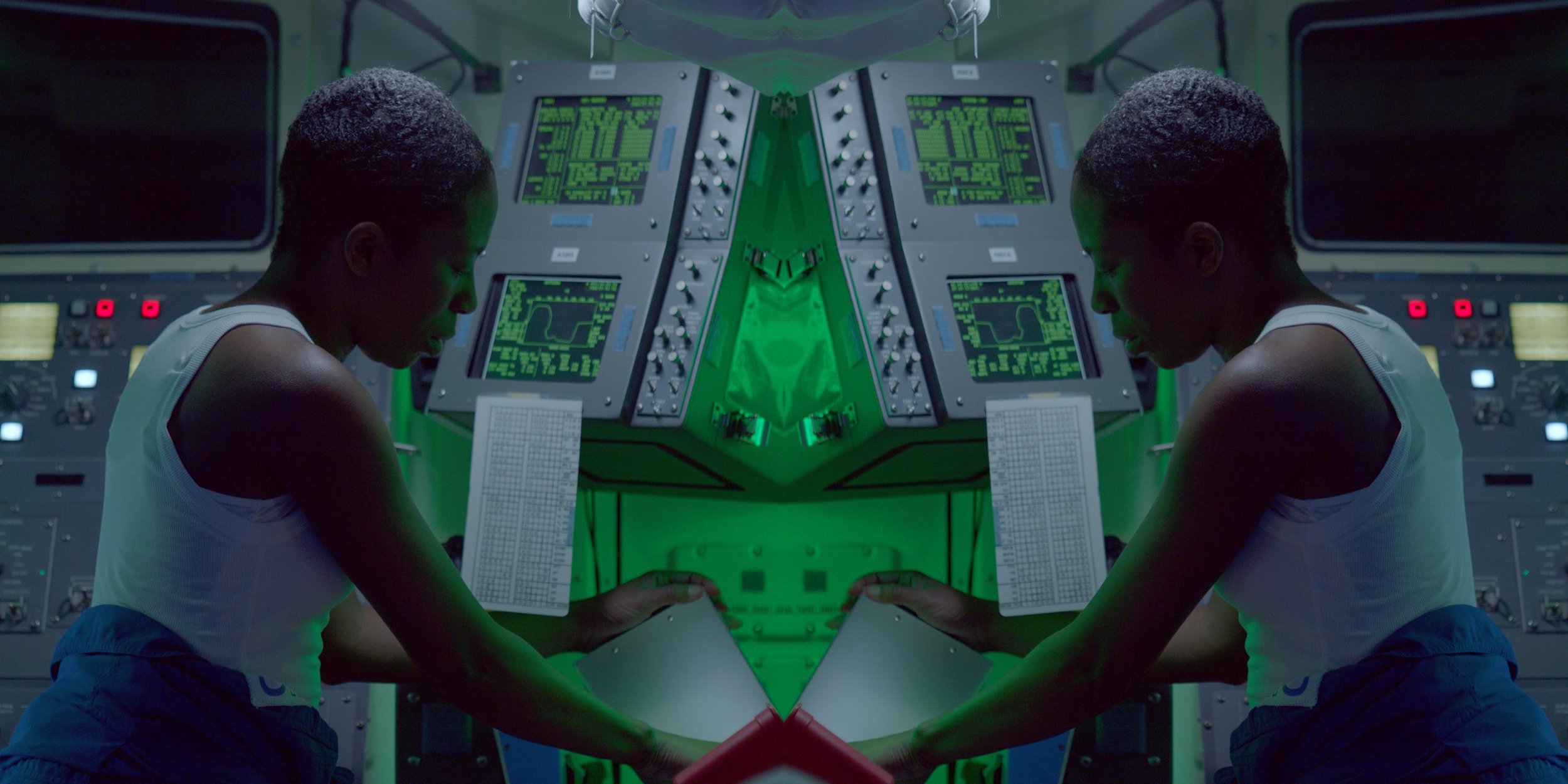Film Review: Doppelgänger by Stan Douglas
Stan Douglas, Still from Doppelgänger, 2019.
Courtesy the artist, Victoria Miro, and David Zwirner.
Written by Nikkala Kovacevic
Stan Douglas’ Doppelgänger explores time and fate with impressive tangibility. When the film experience premiered at the 2019 Venice Biennale, it was projected onto two side-by-side screens. Each screen displayed an individual film, and the two combined to form parallel—yet cohesive—narratives.
The films explore the concept of “quantum teleportation,” a theory that determines that—through the entanglement and separation of particles at their creation—“an action in one makes an identical action in the other, no matter how fast they are, and faster than the speed of light.”
Stan Douglas, Still from Doppelgänger, 2019.
Courtesy the artist, Victoria Miro, and David Zwirner.
Doppelgänger takes place in two alternate realities where humans harness this theory and send out an astronaut to explore an unknown planet, only for the astronaut to get simultaneously sent on the same mission in a parallel reality. The two versions of this astronaut find themselves on alternate planets, where one is treated as an alien invader and the other as a welcomed resident. Each must grapple with the uncanny versions of their realities that they now find themselves in, for they’re both eerily similar and entirely different.
The concept of the film is a continuation of Douglas’ obsession with what he describes as “moments of flux”—often-overlooked acts of transition or transformation that can hold intense power in the greater scheme of things. In other words, Douglas wishes to illuminate the little moments and decisions that, while seemingly unimportant or inconsequential, can end up drastically changing the courses of our lives. He offers respect to moments of weighted possibility.
Stan Douglas, Still from Doppelgänger, 2019.
Courtesy the artist, Victoria Miro, and David Zwirner.
Beyond their content, the film(s) are a marvel in their presentation. Douglas’ devotion to theatrical production and multimedia creations shines through in this piece as he reimagines what it means to be a moviegoer. The presentation splits the reality of the viewer as much as that of the characters. It asks for viewers divide their attention between the two screens; it’s a movement toward cinematic self-awareness that pushes the audience to play an active role in the narrative of the film (s). Viewers are given the choice of attention. This acts as a continuation of Douglas’ initial motive behind the piece: to bring to light the power of flux, and in this case, choice.
Stan Douglas, Still from Doppelgänger, 2019.
Courtesy the artist, Victoria Miro, and David Zwirner.
The film’s plot is heavily imbued with themes of perspective and the meaning behind why we treat others and the unknown the way we do. Such a weighty subject naturally begs viewers to ask questions—both about themselves and the film they’re experiencing. The physical presentation of the work makes the questions feel nearly tangible. By combining a story of alternative universes, multiple screens, and questions aimed towards the art and its audience, Stan Douglas’ Doppelgänger makes each individual element of the film experience as tangible as the hypnotic whole, resulting in an engaging artistic presentation that is as unique as it is unforgettable.











